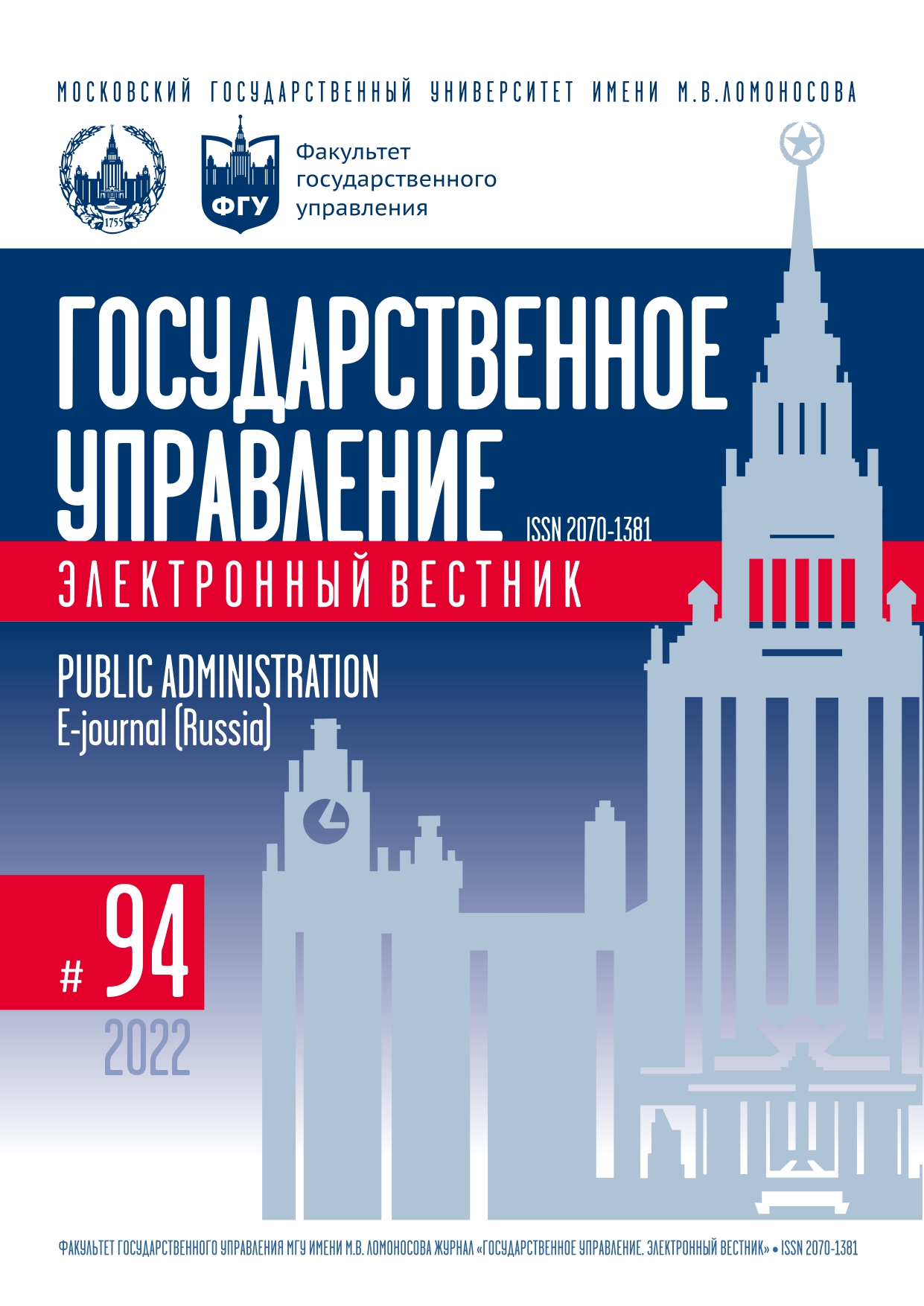Spatial Planning Levels for Territory Development
Keywords:
Spatial planning levels, criteria for spatial planning, system of spatial planning levels, basic and supporting levels, matrix of levels and criteriaAbstract
Spatial planning for the development of territories is a complex system which is defined by, on the one hand, a large number of space elements, and several categories of spaces, on the other hand, the spatial planning system itself can be divided into several levels that are in direct interaction with each other and influence on different processes (both managerial, and executive) that take place at other levels. Despite the fact the levels of spatial development planning can be determined by law both in the whole state and its individual territories, the influence exerted by other levels of spatial planning that are not directly regulated by state legislation cannot be ruled out. This article contains results of a comparative content analysis of the study approaches to the spatial planning levels for the territory development and classification of the spatial planning levels, which are divided into two groups: basic and supporting; two groups of criteria: basic and additional that allow distinguishing and analysing the spatial planning levels are provided. As a result, the absence of a unified approach to the classification of spatial planning levels of territories, and the use of criteria for level analysis was revealed, which necessitated the development of a unified system of spatial planning levels.
References
Леонтьева Л.С., Проскурнова К.Ю. Пространство и территория: направления государственной политики развития // Проблемы теории и практики управления. 2021. № 10. С. 25–37. DOI: 10.46486/0234-4505-2021-10-24-37
Caparros-Midwood D., Barr S., Dawson R. Optimised Spatial Planning to Meet Long Term Urban Sustainability Objectives // Computers, Environment and Urban Systems. 2015. Vol. 54. P. 154–164. DOI: 10.1016/j.compenvurbsys.2015.08.003
Dombi M. Types of Planning Systems and Effects on Construction Material Volumes: An Explanatory Analysis in Europe // Land Use Policy. 2021. Vol. 109. DOI: 10.1016/j.landusepol.2021.105682
Grădinaru S.R., Fan P., Iojă C.I., Niță M.R., Suditu B., Hersperger A.M. Impact of National Policies on Patterns of Built-Up Development: An Assessment over Three Decades // Land Use Policy. 2020. Vol. 94. DOI: 10.1016/j.landusepol.2020.104510
He Zh. Zhao Ch., Fürst Ch., Hersperger A.M. Closer to Causality: How Effective Is Spatial Planning in Governing Built-Up Land Expansion in Fujian Province, China? // Land Use Policy. 2021. Vol. 108. DOI: 10.1016/j.landusepol.2021.105562
Hooimeijer P., Kroon H., Luttik J. Kwaliteit in meervoud; Conceptualisering en operationalisering van ruimtelijke kwaliteit voor meervoudig ruimtegebruik. Gouda: Habiforum, 2001.
Jiang Zh, Mulin D., An P. “Three-Plan Integration”: Exploring the Order and Regulation Capacity of Spatial Planning // China City Planning Review. 2015. Vol. 24. № 4. P. 31–40.
Oliveira E., Hersperger A.M. Governance Arrangements, Funding Mechanisms and Power Configurations in Current Practices of Strategic Spatial Plan Implementation // Land Use Policy. 2018. Vol. 76. P. 623–633. DOI: 10.1016/j.landusepol.2018.02.042
Ran J., Nedovic-Budic Z. Integrating Spatial Planning and Flood Risk Management: A New Conceptual Framework for the Spatially Integrated Policy Infrastructure // Computers, Environment and Urban Systems. 2016. Vol. 57. P. 68–79. DOI: 10.1016/j.compenvurbsys.2016.01.008
Sapena M., Wurm M., Taubenböck H., Tuia D., Ruiz L.A. Estimating Quality of Life Dimensions from Urban Spatial Pattern Metrics // Computers, Environment and Urban Systems. 2021. Vol. 85. DOI: 10.1016/j.compenvurbsys.2020.101549
Scott A.J., Carter C., Reed M.R., Larkham P., Adams D., Morton N., Waters R., Collier D., Crean C., Curzon R., Forster R., Gibbs P., Grayson N., Hardman M., Hearle A., Jarvis D., Kennet M., Leach K., Middleton M., Schiessel N., Stonyer B., Coles R. Disintegrated Development at the Rural–Urban Fringe: Re-Connecting Spatial Planning Theory and Practice // Progress in Planning. 2013. Vol. 83. P. 1–52. DOI: 10.1016/j.progress.2012.09.001
Takeda Sh., The Process of Change in the Definition of “Spatial Quality” in Spatial Planning in the Netherlands // Landscape as Urban Infrastructure: The 15th International Landscape Architectural Symposium of Japan, China, and Korea. Tokyo, October 28–30, 2016. Tokyo: Japanese Institute of Landscape Architecture, 2016. P. 349–354.
Vallecillo S., Polce Ch., Barbosa A., Castillo C.P., Vandecasteele I., Rusch G.M., Maes J. Spatial Alternatives for Green Infrastructure Planning across the EU: An Ecosystem Service Perspective // Landscape and Urban Planning. 2018. Vol. 174. P. 41–54. DOI: 10.1016/j.landurbplan.2018.03.001

